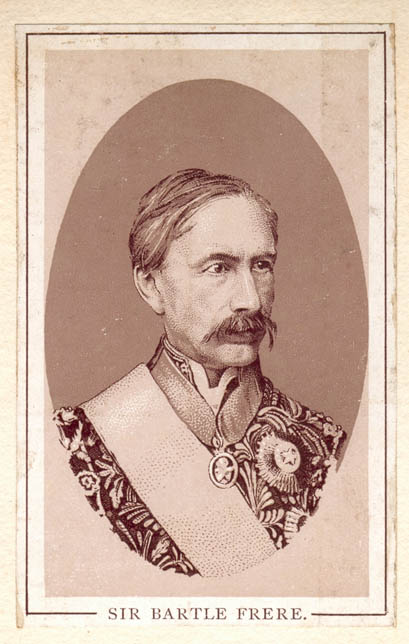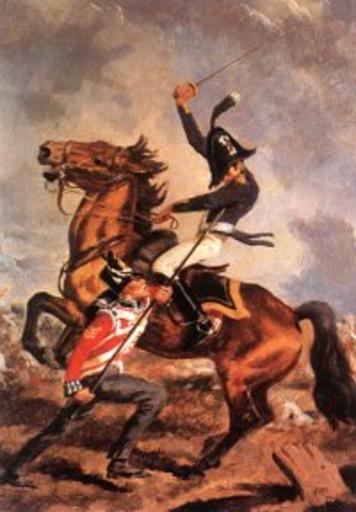|
Frederick Forestier-Walker
General (United Kingdom), General Sir Frederick William Edward Forestier-Walker, (17 April 1844 – 30 August 1910) was a British senior military officer and Governor of Gibraltar. Early life Forestier-Walker was born on 17 April 1844 in Bushey, Hertfordshire. He was the eldest son of General Edward Forestier-Walker, Sir Edward Forestier-Walker (previously Walker), by his first wife, Lady Jane Ogilvy-Grant, daughter of the Francis Ogilvy-Grant, 6th Earl of Seafield, 6th Earl of Seafield. He was educated at the Royal Military Academy Sandhurst. Career Forestier-Walker was Officer (armed forces), commissioned into the Scots Guards as Ensign (rank), ensign and Lieutenant (British Army and Royal Marines), lieutenant, Sale of commissions, by purchase, on 5 September 1862,"Frederick Forestier-Walker." ''Oxford Dictionary of National Bi ... [...More Info...] [...Related Items...] OR: [Wikipedia] [Google] [Baidu] |
GCMG
The Most Distinguished Order of Saint Michael and Saint George is a British order of chivalry founded on 28 April 1818 by George, Prince of Wales (the future King George IV), while he was acting as prince regent for his father, King George III. It is named in honour of two military saints, Michael and George. The Order of St Michael and St George was originally awarded to those holding commands or high position in the Mediterranean territories acquired in the Napoleonic Wars, and it was subsequently extended to holders of similar office or position in other territories of the British Empire. It is at present awarded to men and women who hold high office or who render extraordinary or important non-military service to the United Kingdom in a foreign country, and it can also be conferred for important or loyal service in relation to foreign and Commonwealth affairs. Description The three classes of appointment to the Order are, from highest grade to lowest grade: # Knight Grand ... [...More Info...] [...Related Items...] OR: [Wikipedia] [Google] [Baidu] |
Anglo-Zulu War
The Anglo-Zulu War was fought in present-day South Africa from January to early July 1879 between forces of the British Empire and the Zulu Kingdom. Two famous battles of the war were the Zulu victory at Battle of Isandlwana, Isandlwana and the British defence at Battle of Rorke's Drift, Rorke's Drift. Following the passing of the British North America Act 1867 forming a federation in Canada, Henry Herbert, 4th Earl of Carnarvon, Lord Carnarvon thought that a similar political effort, coupled with military campaigns, might lead to a ruling white minority over a black majority in South Africa. This would yield a large pool of cheap labour for the British sugar plantations and mines, and was intended to bring the African Kingdoms, tribal areas, and Boer republics into South Africa. In 1874, Sir Henry Bartle Frere, Bartle Frere was appointed as British High Commissioner for Southern Africa to effect such plans. Among the obstacles were the armed independent states of the South ... [...More Info...] [...Related Items...] OR: [Wikipedia] [Google] [Baidu] |
Companion Of The Order Of The Bath
Companion may refer to: Relationships Currently * Any of several interpersonal relationships such as friend or acquaintance * A domestic partner, akin to a spouse * Sober companion, an addiction treatment coach * Companion (caregiving), a caregiver, such as a nurse assistant, paid to give a patient one-on-one attention Historically * A concubine, a long-term sexual partner not accorded the status of marriage * Lady's companion, a historic term for a genteel woman who was paid to live with a woman of rank or wealth * Companion cavalry, the elite cavalry of Alexander the Great * Foot Companion, the primary type of soldier in the army of Alexander the Great * Companions of William the Conqueror, those who took part in the Norman conquest of England * Muhammad's companions, the Sahaba, the friends who surrounded the prophet of Islam Film and television * ''Companion'' (film), a 2025 American film * Companion (''Doctor Who''), a character who travels with the Doctor in the TV s ... [...More Info...] [...Related Items...] OR: [Wikipedia] [Google] [Baidu] |
Colonel
Colonel ( ; abbreviated as Col., Col, or COL) is a senior military Officer (armed forces), officer rank used in many countries. It is also used in some police forces and paramilitary organizations. In the 17th, 18th, and 19th centuries, a colonel was typically in charge of a regiment in an army. Modern usage varies greatly, and in some cases, the term is used as an Colonel (title), honorific title that may have no direct relationship to military. In some smaller military forces, such as those of Monaco or the Holy See, Vatican, colonel is the highest Military rank, rank. Equivalent naval ranks may be called Captain (naval), captain or ship-of-the-line captain. In the Commonwealth of Nations, Commonwealth's air force ranking system, the equivalent rank is group captain. History and origins By the end of the late medieval period, a group of "companies" was referred to as a "column" of an army. According to Raymond Oliver, , the Spanish began explicitly reorganizing part of thei ... [...More Info...] [...Related Items...] OR: [Wikipedia] [Google] [Baidu] |
General Officer Commanding
General officer commanding (GOC) is the usual title given in the armies of the United Kingdom and the Commonwealth (and some other nations, such as Ireland) to a general officer who holds a command appointment. Thus, a general might be the GOC British II Corps (a three-star appointment) or GOC British 7th Armoured Division (a two-star appointment). GOC-in-C A general officer heading a particularly large or important command, such as Middle East Command or the Allied Armies in Italy, may be called a general officer commanding-in-chief (GOC-in-C). The governor of the Imperial Fortress colony of Bermuda was also appointed commander-in-chief of the disproportionately-large Bermuda Garrison. From 1912, when Lieutenant-General Sir George Mackworth Bullock replaced the late Lieutenant-General Sir Frederick Walter Kitchener, through the Second World War, the military office was titled ''General Officer Commanding-in-Chief, Bermuda''. GOC-in-Cs are usually one rank higher than a ... [...More Info...] [...Related Items...] OR: [Wikipedia] [Google] [Baidu] |
Captain (British Army And Royal Marines)
Captain (Capt) is a junior officer rank of the British Army and Royal Marines and in both services it ranks above Lieutenant (British Army and Royal Marines), lieutenant and below Major (United Kingdom), major with a NATO ranking code of OF-2. The rank is equivalent to a Lieutenant (British Army and Royal Marines), lieutenant in the Royal Navy and to a flight lieutenant in the Royal Air Force. The rank of Captain (Royal Navy), captain in the Royal Navy is considerably more senior (equivalent to the Army/RM rank of colonel) and the two ranks should not be confused. In the 21st-century British Army, captains are often appointed to be second-in-command (2IC) of a Company (military unit), company or equivalent sized unit of up to 120 soldiers. History A rank of second captain existed in the Ordnance at the time of the Battle of Waterloo. From 1 April 1918 to 31 July 1919, the Royal Air Force maintained the junior officer rank of captain. RAF captains had a rank insignia based on ... [...More Info...] [...Related Items...] OR: [Wikipedia] [Google] [Baidu] |
Sale Of Commissions
Between the 17th and 19th centuries, officer's commissions in infantry and cavalry units of the English and British armies could be purchased. This avoided the need to wait to be promoted for merit or seniority, and was the usual way to obtain a rank in both armies. The practice began in 1683 during the reign of Charles II of England. It existed until it was abolished on 1 November 1871 as part of the Cardwell Reforms. Formally, the purchase price of a commission was a cash bond for good behaviour, liable to be forfeited if the officer in question was found guilty of cowardice, desertion, or gross misconduct. Great Britain and Ireland Only commissions in cavalry and infantry regiments could be purchased, up to the rank of colonel. Commissions in the Royal Engineers and the Royal Artillery were awarded to those who graduated from a course at the Royal Military Academy, Woolwich and subsequent promotion was by seniority. Moreover, the Royal Navy never practised the sale of ... [...More Info...] [...Related Items...] OR: [Wikipedia] [Google] [Baidu] |
Lieutenant (British Army And Royal Marines)
Lieutenant (; Lt) is a junior officer rank in the British Army and Royal Marines. It ranks above second lieutenant and below captain and has a NATO ranking code of OF-1 and it is the senior subaltern rank. Unlike some armed forces which use first lieutenant, the British rank is simply lieutenant, with no ordinal attached. The rank is equivalent to that of a flying officer in the Royal Air Force (RAF). Although formerly considered senior to a Royal Navy (RN) sub-lieutenant, the British Army and Royal Navy ranks of lieutenant and sub-lieutenant are now considered to be of equivalent status. The Army rank of lieutenant has always been junior to the Navy's rank of lieutenant. Usage In the 21st-century British Army, the rank is ordinarily held for up to three years. A typical appointment for a lieutenant might be the command of a platoon or troop of approximately thirty soldiers. Before 1871, when the whole British Army switched to using the current rank of "lieutenant", th ... [...More Info...] [...Related Items...] OR: [Wikipedia] [Google] [Baidu] |
Ensign (rank)
Ensign (; Middle English#Late Middle English, Late Middle English, from Old French ["mark", "symbol", "signal"; "flag", "standard", "pennant"], from Latin [plural]) is a junior rank of a Officer (armed forces)#Commissioned officers, commissioned officer in the armed forces of some countries, normally in the infantry or navy. As the junior officer in an infantry regiment was traditionally the carrier of the Military colours, standards and guidons, regimental colors, the rank acquired the name "ensign". This rank has generally been replaced in army ranks by second lieutenant. An ensign was generally the lowest-ranking commissioned officer, except where the rank of Subaltern (military), subaltern existed. In contrast, the Arab rank of ensign, لواء, ''liwa (Arabic), liwa''', derives from the command of a unit with an ensign, not from the carrier of the unit's ensign, and is today the equivalent of major general. According to Thomas Venn's 1672 ''Military and Maritime Disci ... [...More Info...] [...Related Items...] OR: [Wikipedia] [Google] [Baidu] |
Scots Guards
The Scots Guards (SG) is one of the five Foot guards#United Kingdom, Foot Guards regiments of the British Army. Its origins are as the personal bodyguard of King Charles I of England and Scotland. Its lineage can be traced back to 1642 in the Kingdom of Scotland, although it was only placed on the English Establishment in 1686. History Formation; 17th century The regiment now known as the Scots Guards traces its origins to the Marquis of Argyll's Royal Regiment, a unit raised in 1642 by Archibald Campbell, 1st Marquess of Argyll in response to the Irish Rebellion of 1641, 1641 Irish Rebellion. After the Restoration (England), Restoration of Charles II, the George Livingston, 3rd Earl of Linlithgow, Earl of Linlithgow received a commission dated 23 November 1660 to raise a regiment which was called The Scottish Regiment of Footguards. It served in the Battle of Bothwell Bridge, 1679 Covenanter rising of 1679, as well as Argyll's Rising in June 1685, after which it was expanded ... [...More Info...] [...Related Items...] OR: [Wikipedia] [Google] [Baidu] |

